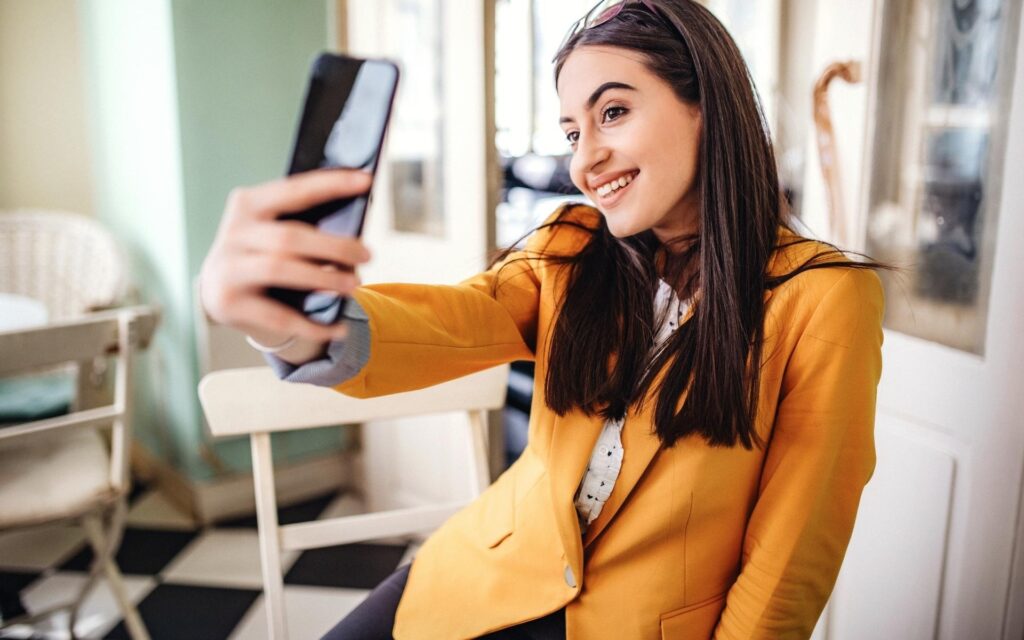11 Retail Content Marketing Trends To Inspire Your Next Campaign

Are you thinking about retail content marketing? These 11 trends will help you to build your brand.
It doesn’t matter which digital platform you use for your business promotion, it can be difficult to develop new content ideas that will grab your audience’s attention.
Popular content is constantly changing, even before you hit “publish” on the latest post. So how can you plan effectively for your next major marketing campaign?
These 11 trends can be adapted for your retail business if you are stuck or looking for inspiration.

1. Keep Your Company Relevant by Providing Value
You should ask yourself, “What will the viewer get from this piece of content?”
Fitbit does an excellent job posting tips and advice to their followers in order to improve their physical and mental health.
Cocokind’s aesthetic content is balanced in the beauty space by informational posts about building a skin routine and walkthroughs on how to integrate their products into an existing regimen.
You have plenty of brands that can distract your audience with their content. So, if you want to keep your brand relevant and top-of-mind for your customers, focus on the Value you offer.
2. Get your customers involved
A constant stream of sales content from any brand is not something anyone wants. How do you keep people engaged and interested when you have a product to promote?
You can tap into your existing customer base to harness the power and influence of word-of-mouth marketing.
Vacation Inc. was able to do precisely that.
Vacation Inc. launched in April 2021 their Nordstrom- and Ulta-partnered screen featuring an 80s beach vibe.
Customers can create honorary job titles for their customers and share their business cards via their social media channels.
Over 10,000 people “changed careers” within days of the presale’s launch, with roles such as “Emergency Tequila Shot Salt Secretary”, and “Catamaran Fly Fishing Specialist” (my role).
Vacation Inc.’s success was due to a growing fan base on social media.
The brand quickly shared the fun and interactive content with minimal effort after launch, leaving the customers to do all the branding work.
3. Double-Down on Short-Form Videos
Video content is a vital component of any content marketing campaign.
Wyzowl reports users to spend 18 hours per week viewing video content across multiple platforms, specifically shorter videos, as of 2021.
It is not surprising, considering the rapid growth of TikTok.
If you don’t use this content, it is time to think about it.
Gucci, a luxury Italian fashion house, is an excellent example of how video content can be used as a retail brand.
Gucci continues to adapt its marketing strategy to meet the needs of a video-oriented audience by balancing behind-the-scenes content with celebrities wearing new collections.
4. Create entertaining content
Marketing is about selling more products and winning more customers.
You can still have fun doing it!
Retail brands should prioritize entertaining content with so much competition and a growing audience that wants instant gratification.
Aviation Gin is the best at this.
Ryan Reynolds, an actor, is the company’s owner. The company relies heavily on its wit and uses humor and satire as a way to entertain its audience.
The “alternative” to Peloton Girls ad quickly built connections with viewers thanks to its cheeky overtones and reminders of why it went viral.
It is not easy to create funny marketing content.
It can pay off when you do.
5. Highlight the most important aspects of your brand
Relatability in brand values is more important than ever in a consumer world that is increasingly concerned about environmental and social issues.
DTC Beauty brand Jones Road is one of the top performers in this market.
Bobbi Brown, a makeup veteran, founded Jones Road. Its cruelty-free products, as well as body-positive content, have quickly gained a following.
If you want to clarify your company’s values, the brand’s TikTok page is a great place to start.
Tutorial videos and how-to videos serve an educational purpose and are informative. They also weave narratives about self-empowerment to make emotional connections with their viewers.
The brand has also attracted non-traditional audiences to its social platforms through videos aimed at customers over 50 using Instagram and TikTok.
Jones Road is a brand that embraces who they are and believes in. It quickly became a leading brand for high-quality video content.
6. Use Influencer Partnerships To Educate Your Audience
It’s not going away anytime soon to partner with influencers.
It’s a great way to bring your brand to new customers and remind them about your offerings.
Amanda McCrossin, a wine expert and sommelier, has made TikTok educational content her go-to resource for wine lovers around the globe.
This channel shows how to work with influencers to produce educational and exciting content that viewers enjoy, from product recommendations for different occasions to winery tours to appeal to vacationers.
7. Get on the Audio Bandwagon
Finding the right audio for video-first channels such as TikTok or Instagram Reels is crucial.
Nowadays, it doesn’t take long for a soundbite of wisdom to become viral.
It is great to have a list of video ideas you can quickly film and then publish to catch the latest trends as soon they occur.
Trendy sounds can appear out of the blue, so be ready if you plan to use them in your videos.
The wine bottle brand Partner In Wine does an excellent job of this. They keep updated with the latest TikTok and Instagram sounds and post their content using these.
These sound clips can be searched within the app, making them searchable. This opens up new opportunities for potential customers.
8. Building trust with subject matter experts
It is one thing to create informative and educational content for your audience.
How can they trust your brand if they are new to it?
Partnering with experts in the field is a great way to increase your credibility.
This tactic is commonly used in B2-B marketing, but retail B2C brands also use it.
Studio McGee is an interior design brand that uses its blog to share design tips and lifestyle information from its guests and in-house experts.
The company’s home decor tips and tricks and design inspiration are a testament to their trustworthiness.
9. Jump on Pop Culture Moments
You never know what moment might arrive in the cultural consciousness. This is the same as trending sounds.
Lemonhead LA is a beauty salon.
Beyonce and Lady Gaga are already fans of the brand’s glitter makeup products. The brand was featured in HBO’s first season of “Euphoria.”
The show inspired the brand to create a limited-edition collection, which quickly became a huge success with customers.
Bloomingdale’s also has been successful in creating a pop-up collection of Regency-inspired products after the success of Netflix’s Bridgerton.
Pop culture is constantly changing, so keep up to date.
10. Get out of your comfort zone
Trying new channels or platforms is risky if you have a limited marketing budget.
It can be worth it for the most successful brands.
You can quickly get ahead of your competition by trying something new, starting a social media account, or adopting an entirely different content format.
Trader Joe’s decided to try podcasting in 2018. They planned to create a series of five episodes to provide customers with a behind-the-scenes look at the brand’s story.
It is possible that you don’t think many people would be interested to hear an audio deep dive into a grocery shop.
The podcast was so popular that it continued to release new episodes.
A great marketer is known for thinking outside of the box.
Don’t forget to research to be thorough before making any significant strategy changes like these.
11. Look beyond single-platform silos
Retail experiences no longer have to be purely online or offline because technology is integrated into our everyday lives.
Customers expect an omnichannel experience that takes them from their phone to the store and back.
Numerous studies have demonstrated the benefits of Omnichannel Marketing, including increased customer reach and satisfaction and higher profits across all business sectors.
Target is an excellent choice for this type of marketing because they don’t have a channel focus but think across many platforms.
Pinterest has recently been one of their most successful partners, especially the Pinterest Lens feature.
The Target app allows users to take photos of products they like using the Pinterest app. It will then show them similar outcomes from their collections.
Although your retail brand might not have the reach and budget of Target or other multi-billion-dollar companies, it still holds.
Instead of focusing your content strategy on one platform, consider how you can combine all your efforts to create a unique experience for customers.

